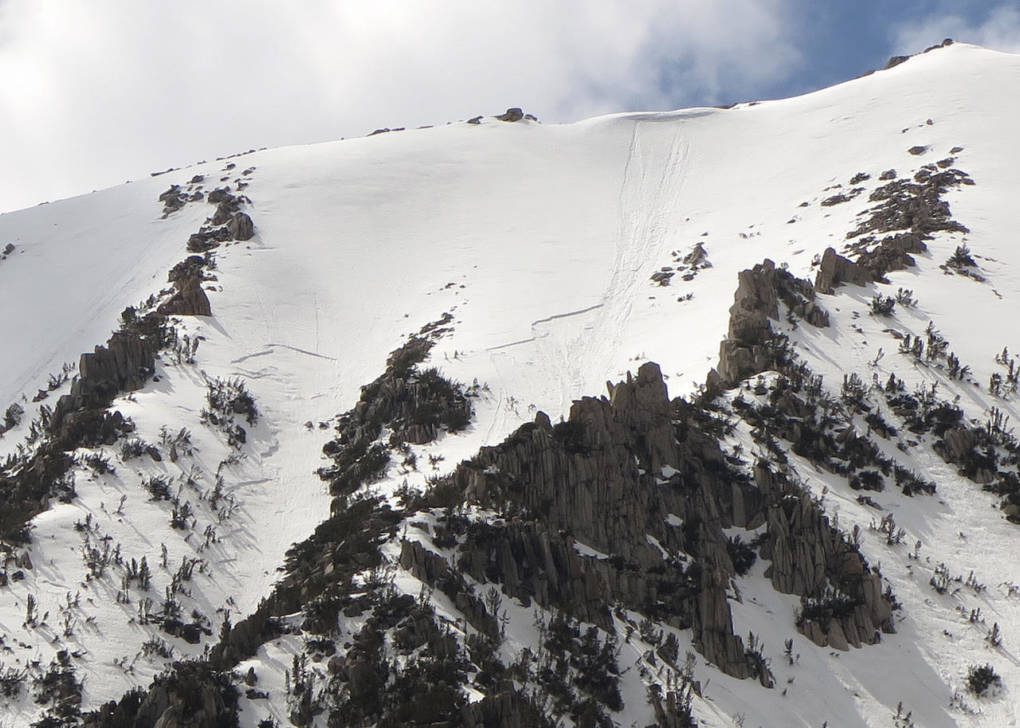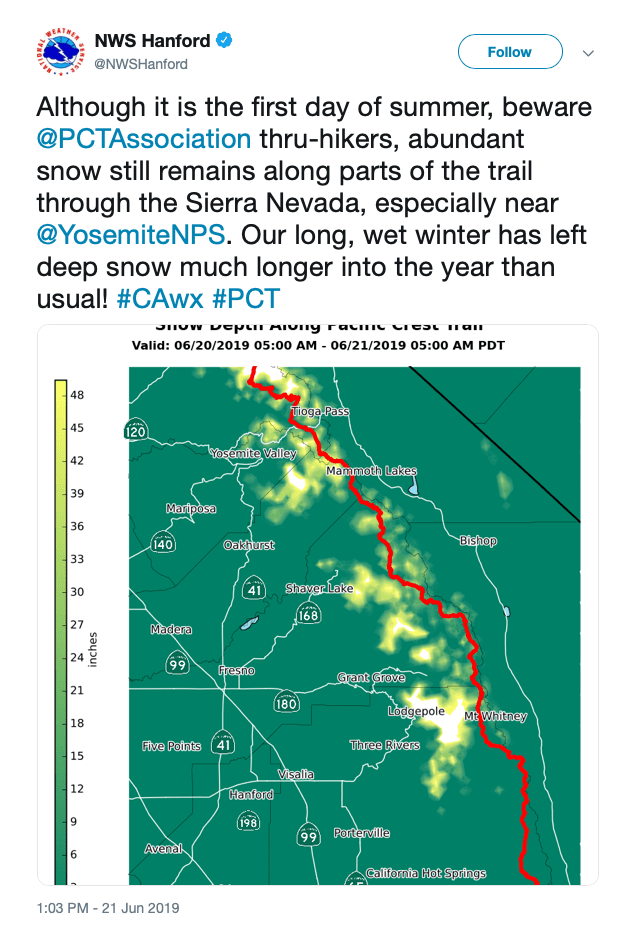
Heavy winter snowfall that continued through spring and into May, followed by relatively cool then rising temperatures in June, has led to an ongoing risk of summer avalanches in the Sierra Nevada, posing a threat to hikers on the famed Pacific Crest Trail (PCT), experts are warning.
‘This year is different because of how much snow there is. And that means that there’s continued avalanche danger.’ Jack Haskel, Pacific Crest Trail Association
An above normal amount of snow is still on the ground, said Emily Heller, a meteorologist at the National Weather Service in Sacramento, which will affect the thousands of people that attempt to hike the PCT, a trail that stretches more than than 2,600 miles through California, Oregon, and Washington.
“Temperatures are definitely increasing but they haven’t got baking hot up high yet,” SP Parker, owner of the Bishop-based Sierra Mountain Center who has about 40 years of mountain guiding experience, said Thursday. What that means for conditions: “It’s going to keep on avalanching for a little while yet,” he told KQED.

Parker said he saw a “wet slab” avalanche, where the top surface was coming off as one cohesive layer, last week near the Sierra Crest ridgeline in Rock Creek, very unusual for this time of year. Conditions are moving toward more stability, but Parker said he was advising hikers to be cautious and even wait to embark upon their PCT adventure.
“There’s some years, such as this year, where maybe it’s just not a good idea to do the PCT,” he said. “Be prepared to come back and do it when things are in your favor. The key to success in the mountains is not necessarily rolling the dice when you don’t have to.”
The Eastern Sierra Avalanche Center and the Sierra Avalanche Center have closed for the season, but people continue to post their observations to their websites. Some people reported avalanches in late May and early June, although those reports are unverified.